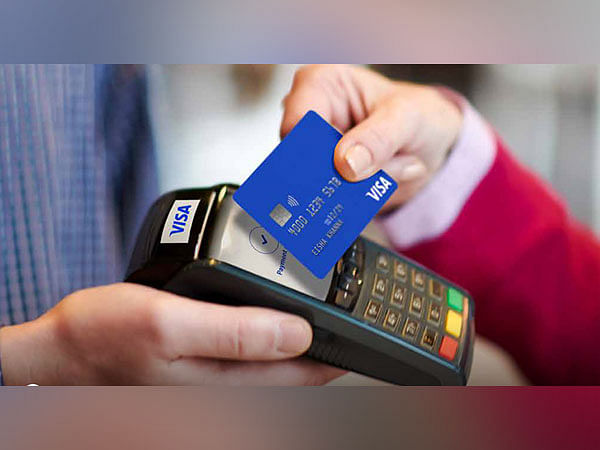Mumbai (Maharashtra) [India], June 16 (ANI): Contactless payments in India surged by six times in the last three years led by huge growth in adoption by sectors like quick-service restaurants, pharmacies, food, and grocery amid COVID-19 pandemic, as per an industry report released on Thursday.
Contactless payments saw a tremendous surge in recent years, their contribution to total face-to-face (F2F) transactions growing by more than six times – from less than 2.5 per cent in December 2018 to 16 per cent in December 2021, according to a report done jointly by global digital payments leader Visa and payments processor Worldline.
The report titled ‘India taps into a Contactless Future’, highlights that the contactless will fuel the digital payments ecosystem by offering more convenient and secure solutions to consumers and merchants across segments.
It noted that the mode of less-touch payments in stores ensured consumer safety, a necessity since the pandemic.
Additionally, the adoption of EMV chip cards has been pivotal for the growth of contactless payments, aided by supportive regulations that increased the contactless limit in India to Rs 5,000 in 2021. The cohesive experience of contactless payments, with their inherent convenience, speed, and enhanced security features are a major reason for rapid adoption by consumers, merchants, issuers, and payment processors, the report noted.
Contactless payments refer to the cashless transactions that do not require cards to be swiped at Point-of-Sale (POS) terminals.
Commenting on the report findings, Ramakrishnan Gopalan, Vice President, Head of Products and Solutions, for India and South Asia, Visa, said “The rapid adoption of contactless payments in the past few years is testament to the rise in acceptance of safer and faster forms of cashless payments across consumer segments. We have observed that the key drivers of contactless growth – availability, convenience, utility, and security – will continue to aid adoption at scale as contactless cards become ubiquitous. We are confident that it is a sustainable payment solution for seamless face-to-face transactions and will help greatly in reaching the goal of a less-
cash society.”
Through the pandemic, contactless payments recovered faster than other forms of face-to-face payment due to greater consumer ease and safety. Wider adoption of contactless payments will be an essential component in building smarter payments infrastructure and smarter cities.
Contactless payments also result in repeat purchases and customer stickiness, and financial inclusion through cards, a familiar instrument to most consumers today.
“As contactless payment methods have shifted from a choice to a necessity in recent times, backed with multiplying volumes of transactions in the last three years, we see immense potential in contactless further helping digitise the merchant ecosystem,” said Sunil Rongala, Senior Vice President, Strategy, Innovation and Analytics, Worldline India.
“Coupled with the increasing merchant acceptance of contactless cards we are seeing not only in metro cities but in non-metro cities as well, we anticipate contactless payments to be a key driver of digital payments in the future,” Rongala said.
According to Worldline India, while 25 per cent of all transactions at supermarkets were contactless in January 2020, these transactions rose to 31 per cent by January 2022.
The highest adoption of contactless payments was observed in sectors like Quick Service Restaurants, pharmacies, food, grocery, etc., which accelerated with the impact of the pandemic.
In 2020 and 2021, Delhi NCR, Karnataka, Gujarat, and Telangana had the highest proportion of contactless transactions and penetration, across both debit and credit cards.
Worldline India Digital Payments Report 2021 had shown that while cards contribute to 26 per cent of all digital transactions, they generate 53 per cent of the value of all digital commerce. (ANI)
This report is auto-generated from ANI news service. ThePrint holds no responsibility for its content.






